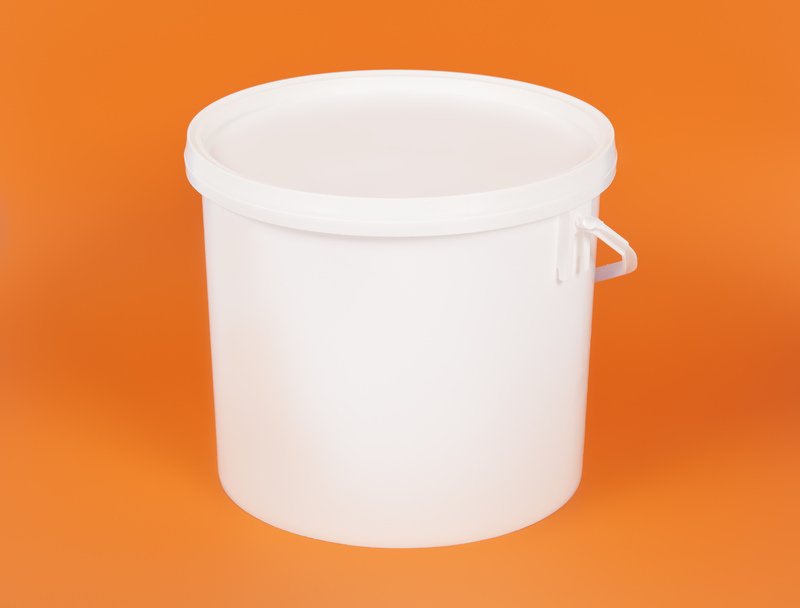Tips for Properly Storing a Freezer During Downtime
Posted on 25/06/2025
Whether you're moving, remodeling, or simply not using your freezer for a while, it's essential to store it correctly to maintain its efficiency, lifespan, and hygiene. Proper freezer storage during off-season or downtime prevents unpleasant odors, pests, and mechanical issues. In this comprehensive, reader-friendly article, we'll explore everything you need to know about storing a freezer when not in use to help you protect your investment.
Why Proper Freezer Storage Matters
A freezer is a valuable appliance both financially and for its role in food preservation. However, when a freezer is not correctly stored during periods of non-use, it can suffer from:
- Mold and mildew growth
- Unpleasant odors
- Mechanical damage
- Rust and corrosion
- Pest infestations
- Loss of efficiency or even breakdown when restarted
Taking proactive steps ensures your freezer remains clean, safe, and ready for use, whether you're storing it for weeks or several months.

Preparing Your Freezer for Storage
Step 1: Remove All Food Contents
Before shutting down, it's crucial to empty your freezer completely. Perishable items, ice cream, and frozen goods will spoil or leak as the freezer warms, resulting in messes that can be difficult to clean.
- Transfer food to another active freezer, if available.
- Dispose of expired or unwanted items responsibly.
- Consider donating usable food to local pantries.
Step 2: Defrost and Clean Thoroughly
Defrosting your freezer is a vital part of preparing a freezer for long-term storage. Turn off the appliance and unplug it. Open the doors to let the ice melt. Place towels to soak up excess water.
- Allow 12-24 hours for thorough defrosting.
- Remove shelves, drawers, and interior bins for separate cleaning.
- Clean all surfaces with a mild detergent or a mixture of baking soda and water.
- Wipe dry with a soft towel.
Underlining the importance of cleaning: Even minimal residue can cause enduring odors or mildew, making it essential to clean meticulously before storage.
Step 3: Dry the Interior Completely
Moisture is an enemy when it comes to freezer storage. Dampness encourages mold, mildew, and corrosion. Allow the freezer to air dry with doors open for at least 24 hours. Use a dry cloth or paper towels to wipe up any remaining dampness.
Step 4: Secure and Protect Components
Remove or secure loose parts like shelves and trays to prevent shifting and damage during transport or storage. Bundle removable components together in a sealed bag and store them inside the main compartment, keeping everything organized.
Choosing the Right Storage Location
The environment where you store your freezer plays a significant role in its long-term condition. Follow these guidelines for optimal freezer storage conditions:
- Keep in a dry, well-ventilated area: Basements, garages, or outdoor sheds with climate control are suitable; avoid damp, humid, or rain-prone locations.
- Avoid direct sunlight and heat sources: High temperatures may damage seals and accelerate aging.
- Provide space: Leave 2-4 inches around the sides and back for air circulation.
Can I Store a Freezer in an Unheated Garage?
It's possible to store a freezer in an unheated garage, provided it's unplugged and properly prepped. However, temperature fluctuations can cause condensation, which risks rust and mildew. For long-term downtime storage:
- Use a moisture absorber or place silica gel packets inside the freezer to control humidity.
- Raise the freezer off the ground using a pallet to prevent contact with moisture or pooling water.
- Cover with a breathable cloth, not plastic, to prevent condensation build-up.
How to Store a Freezer When Not In Use
Step 1: Leave Doors Ajar
For freezer downtime storage, keep the doors propped open slightly to allow air circulation. This minimizes mold, stale odors, and moisture accumulation. Many freezers have a locking mechanism to keep doors ajar, or you can use a wedge or towel.
Step 2: Lock or Secure the Doors
If children or pets have access to the storage area, securely tape or zip-tie the door shut to avoid accidents. Disconnected freezers can pose a suffocation hazard if children climb inside.
Step 3: Elevate the Appliance
Elevating your freezer ensures air flow beneath and prevents rust caused by ground moisture -- especially on concrete floors.
Step 4: Protect the Exterior
If dust or bugs are concerns, drape the unit with a breathable (not plastic) cover. Avoid airtight wrappings that trap condensation.
Storage Tips Across Different Freezer Types
Upright Freezers
- Ensure doors are slightly open to prevent odor and mold.
- Secure with bungee cords if needed.
- Store upright to avoid coolant migration and potential leaks.
Chest Freezers
- Prop lid open at least one inch for airflow.
- Elevate with a pallet or blocks.
- Lock the lid or tape securely in homes with children.
Compact or Portable Freezers
- Drain any built-in reservoirs or water catchments.
- Store in an upright position to protect cooling mechanism.
- Follow manufacturer's guidance for long periods of inactivity.
Other Essential Tips for Long-Term Freezer Storage
Monitor and Inspect Regularly
Don't forget about your stored freezer! Check every 2-4 weeks for signs of moisture, mildew, or pests. Air it out if necessary.
Protect Against Pests
- Plug or tape up any drainage holes to keep out insects and rodents.
- Place natural repellents like cedar balls or mothballs nearby (outside, not inside the compartment) if pests are a concern.
Consider Preventive Maintenance Before Reusing
- Inspect gaskets and seals for cracking or warping before plugging in.
- Wipe down interior and exterior before restocking with food.
- Allow the appliance to run empty for several hours after plugging in to ensure no odors persist.
Restarting Your Freezer After Storage
When you're ready to bring your freezer back into service, follow these steps to ensure a smooth restart:
- Thoroughly clean and check for odors or pests.
- Plug in and allow the freezer to reach optimal freezing temperature (usually at least 4-6 hours) before adding food.
- Inspect the power cord and plug for damage before reconnecting.
- Check the compressor and other mechanical components for noises or irregularities.
Do not overload the unit immediately; stagger food placement to avoid overstraining the compressor during startup.
Common Mistakes to Avoid When Storing a Freezer During Downtime
- Storing with the doors completely closed: leads to mold and odor buildup.
- Leaving moisture inside: encourages mildew.
- Storing in damp or direct sunlight areas: increases risk of rust and damage.
- Neglecting regular checks: allows small problems to worsen unnoticed.

FAQs About Freezer Storage During Downtime
How long can a freezer be stored unused?
With proper freezer downtime storage techniques, most modern freezers can stay disconnected for several months to over a year without harm, as long as moisture, pests, and extreme temperatures are managed.
Should a freezer be stored upright or laying down?
Always store upright freezers standing up. Laying down can cause compressor oils to flow incorrectly, risking damage when restarted. Chest freezers may be briefly transported on their sides, but should be upright for storage and at least 24 hours before re-use.
Is it better to keep a freezer running when not in use?
While some think it's better to leave a freezer on during downtime, this wastes electricity and poses risks of forgetfulness (like power outages spoiling unnoticed food). It's best to unplug, empty, and store properly, following the storage tips above.
Can I lock the freezer doors during storage?
You may lock or secure doors during storage for safety, especially in homes with children or pets. Just remember to include ventilation (propping slightly open) even if locked.
Conclusion: Preserve Your Freezer with Proper Downtime Storage
Proper freezer storage during periods of non-use is critical for extending the appliance's lifespan and ensuring it's ready for future use. By following these comprehensive freezer storage tips--including cleaning, ventilation, location selection, elevation, and pest prevention--you'll enjoy a fresher, safer, and more reliable appliance when you power it up again.
Taking the time to carefully store your freezer pays off in longevity, energy savings, and peace of mind. For your next downtime, use these expert tips to keep your freezer in top condition.
- Remove and responsibly dispose of all food before storage.
- Clean, dry, and air out the unit completely.
- Choose a dry, well-ventilated, and pest-free storage environment.
- Prop doors open and secure for safety and airflow.
Looking for more appliance care advice? Explore our blog for expert tips on maintaining, moving, and optimizing all your home appliances!



